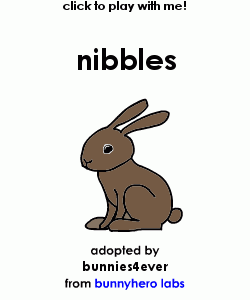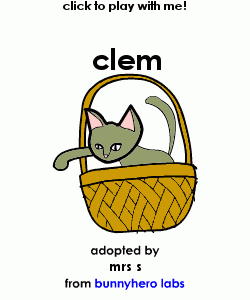Riverine Rabbit
The riverine rabbit is the most endangered mammal in South Africa and the 13th most endangered in the world. Its scientific name is Bunolagus monticularis, and its common name is Riverine rabbit. Riverine rabbits have that common name because they love living and being by the rivers there. They also has at least two nicknames: Bushman hare and bushman rabbit. They are 34-48 cm. Riverine rabbits don’t weigh as much as the rabbits that you would usually see in your garden. A male Riverine rabbit is about 1.5 kilograms (3.3lbs.) and a female Riverine rabbit is about 1.9 kilograms (4.19 lbs.). New born riverine rabbits weigh only forty to fifty grams (0.09-0.11 lbs.). Riverine rabbits also weigh less than a small bag of cooking flour. Being this small makes them a target for kidnapping. You can tell that a you found a riverine rabbit because they have a brown stripe running down their lower jaw. Riverine rabbits also have very long ears and they’re fur is soft and silky. Their bodies, aside from their bellies and necks, is dark brown with a lot of black speckles all over their body. Riverine rabbits’ fur on their bellies and neck’s is creamy colored. They also have a light brown tail with a black tip. Riverine rabbits also have a white ring around each eye. Riverine rabbits have short legs which have a lot of fur covering them. Riverine rabbits are herbivores meaning that they only eat plants and berries. Riverine rabbit eats leaves and grass at night and they eat their droppings during the day. When they eat their droppings it’s good because it gives them vitamin B. Vitamin B includes calcium and phosphorus. Riverine rabbits live in tropical, desert, dune and scrub forest.
Riverine rabbits are critically endangered. This is not good because they only have one or two babies per year but usually 1 while mountain cottontails have 15- 25 babies per year. Riverine rabbits are critically endangered because of natural predators, overgrazing and erosion, fire, habitat destruction, getting hit by cars, natural disasters, competition for food and shelter, and irresponsible hunting. They are also very slow, so they are very easy to trap or for predators to catch. Riverine rabbits sometimes get caught in traps that farmers set to catch pest that they don’t want there. People want the land that riverine rabbits live in because it has extremely rich soil, so they want the land for farming and stuff like that. There are only 400 individuals left in the wild. Astrophysicists took a break from finding galaxies to find riverine rabbits, said, “You can poke them with a pillow and practically kill them.”
Why save the riverine rabbits? If the riverine rabbits go extinct then the ecosystem will be unbalanced and most of the plants it ate would grow uncontrollably, and all the predators that ate it would either starve or must find something else to eat, which may be rough. I also really love rabbits and a lot of other people do to. They wont hurt people like a lot of other animals do so it makes it a lot easier to save. And since I really love rabbits I think the more rabbits left the better. That’s the only rabbit in South Africa, so we should try as hard as we can to protect them.
We don’t know very much about the riverine rabbit and they are extremely hard to find so if we don’t save the riverine rabbits we may never know very much about them before they go extinct. On news 24 Christie Bragg said, “If you save the rabbit and you’re protecting its habitat in that area, you’re not only protecting the rabbit, you’re protecting the communities of plants, of insects, of other biodiversity and, through out rehabilitation program, we’re actually provisioning ecosystem services.”
So, I think that we should try to save the Riverine rabbits because if we don’t then we might not know any more about them before they go extinct, the plants will grow uncontrollably, and they are the only rabbits living in South Africa, so if we don’t keep them alive then we will lose the only rabbit in South Africa. (And let’s face it they’re adorable).
Cite Page
Books
McGavin, George. Endangered: Wildlife on the Brink of Extinction. Cassell Illustrated, 2006
Miller, Sara Swan. Rabbits, Pikas, and Hares. Franklin Watts, 2002
Websites
http://www.iucnredlist.org/details/3326/0
https://www.africanbudgetsafaris.com/blog/6-endangered-animals-to-see-on-safari/
https://en.wikipedia.org/wiki/Riverine_rabbit
https://www.news24.com/Green/News/Rabbit-indicates-environment-damage-20121113
http://www.waza.org/en/site/conservation/waza-conservation-projects/riverine-rabbit-conservation
http://eol.org/pages/311977/details
https://www.nrdc.org/onearth/astrophysicists-take-break-finding-galaxies-look-rare-rabbits


